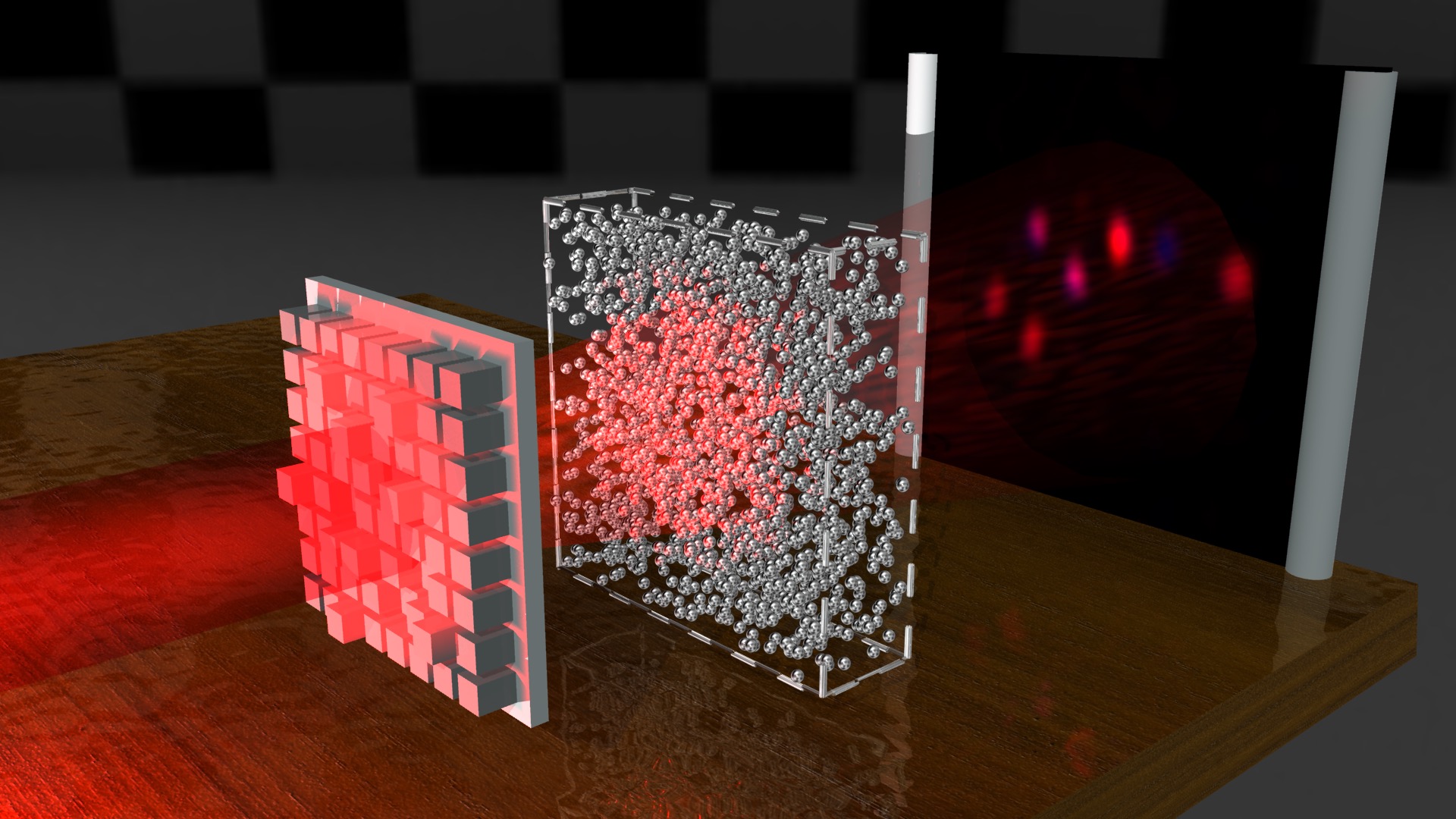
It sounds almost like science fiction, but it is reality. With the help of very special light waves, so-called “scattering-invariant light modes,” opaque objects can be made transparent – at least for these light waves. Light normally cannot penetrate certain materials, or only to a limited extent, because the light is scattered, altered and deflected. But researchers at the Vienna University of Technology, Austria, and the University of Utrecht, Netherlands, have now been able to show that there is a class of very special light waves for which opaque objects become transparent.
This means that for “any specific disordered medium” – be it a sugar cube or a glass of milk – tailor-made light beams could be created that are merely attenuated but not completely altered. This light can then, for example, pass through the sugar in a very specific pattern, as if it were not there at all, and arrive on the other side as a light pattern that has the same shape as the original one.
Infinite numbers of different shapes
Just as ripples on a water surface could take on an endless number of varying forms, light waves could also have an infinite number of different shapes, the scientists say. “Each of these light wave patterns is changed and deflected in a very specific way when you send it through a disordered medium,” explains Prof. Stefan Rotter of the Institute of Theoretical Physics at the Vienna University of Technology. He is working with his team on mathematical methods to describe such light-scattering effects.
He is supported by Prof. Allard Mosk, head of the experimental research group from Utrecht University, Netherlands, who is contributing the expertise to produce and characterize such complex light fields. “As a light-scattering medium, we used a layer of zinc oxide – an opaque white powder of completely randomly arranged nanoparticles,” he explains. First, he says, you have to characterize this layer precisely and shine very specific light signals through the zinc oxide powder. That way you can measure how they arrive at the detector behind it. From this, he continues, you can infer how the medium would alter any other waves. Finally, you could also calculate exactly which wave patterns would be altered by this zinc oxide layer as if it did not scatter the waves at all, says the scientist.
“As we were able to show, there is a very special class of light waves, so-called scattering-invariant light modes, which produce exactly the same wave pattern at the detector, regardless of whether the light wave is sent through the air or has to penetrate the complicated zinc oxide layer,” says Stefan Rotter. In short, “the zinc oxide actually doesn’t change the shape of these light waves – they just get a little weaker overall,” Allard Mosk explains.
Light instead of X-rays?
These scattering-invariant light modes are very rare, but if you combine different ones correctly, the result is another scattering-invariant waveform. “In this way, at least within certain limits, you are pretty free to choose which image you want to send through the object without interference,” says Jeroen Bosch, a doctoral student who worked on the experiment. In the experiment, the researchers chose the constellation Big Dipper as an example. “And indeed, it was possible to determine a scattering-invariant wave that sends an image of the Big Dipper to the detector – independent of whether the light wave is scattered by the zinc oxide layer or not. To the detector, the light beam looks almost the same in both cases.”
Especially in materials research, biological experiments or medicine, this method could revolutionize certain procedures in the future. “In hospitals, you use X-rays to look inside the body – they have a shorter wavelength and can therefore penetrate the skin. But how a light wave penetrates an object depends precisely not only on the wavelength, but also on the waveform,” says Matthias Kühmayer, who is working on computer simulations of wave phenomena as part of his dissertation at the Technical University of Vienna.
“If you want to focus light inside an object at specific points, our method opens up completely new possibilities. We were able to show that the light distribution inside the zinc oxide layer can also be specifically controlled.” For example, it could be used for biological experiments to make light penetrate to very specific points, allowing a view deep into the interior of cells.
The scientists published the results of their research in the journal Nature Photonics.
Cover photo: The light beam penetrates a disordered medium and still produces the same image at the detector as if the medium were not there at all. © Allard Mosk/Matthias Kühmayer, Vienna University of Technology







